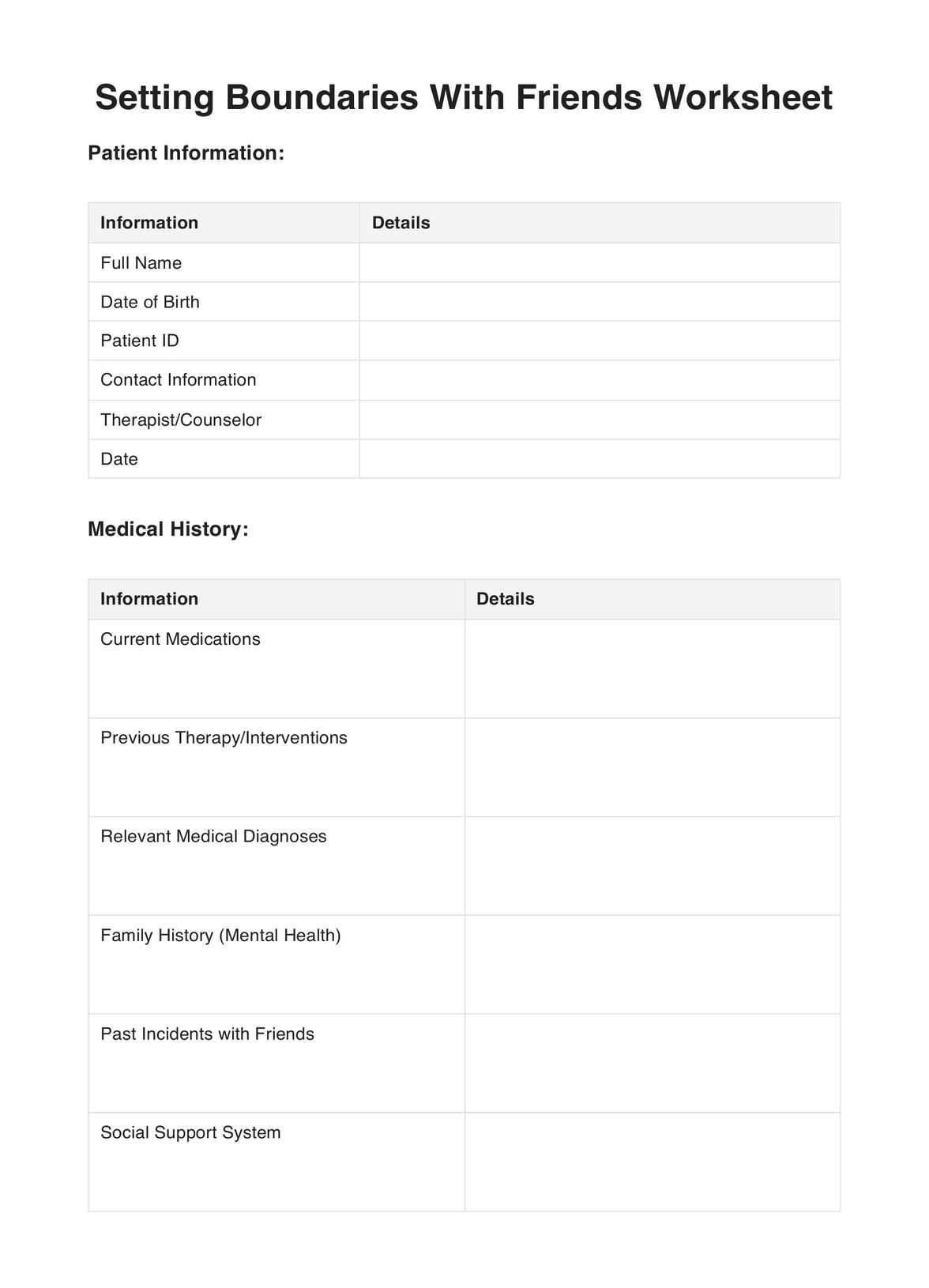Yes, the worksheet is designed to be versatile and can be adapted for various age groups. However, the therapist should ensure it's tailored to the patient's needs and comprehension levels.

Setting Boundaries With Friends Worksheet
Explore setting boundaries in friendships with Carepatron. Boost your practice with evidence-based tools and unmatched security for healthcare pros.
Use Template
Setting Boundaries With Friends Worksheet Template
Commonly asked questions
Absolutely! Carepatron allows for easy customization, ensuring therapists can modify the worksheet to fit each patient's unique needs best.
Yes, Carepatron is committed to safeguarding all user data. The platform uses robust encryption methods and is HIPAA compliant, ensuring the security and confidentiality of your information.
EHR and practice management software
Get started for free
*No credit card required
Free
$0/usd
Unlimited clients
Telehealth
1GB of storage
Client portal text
Automated billing and online payments











